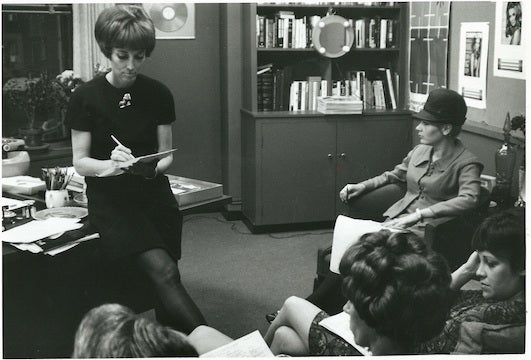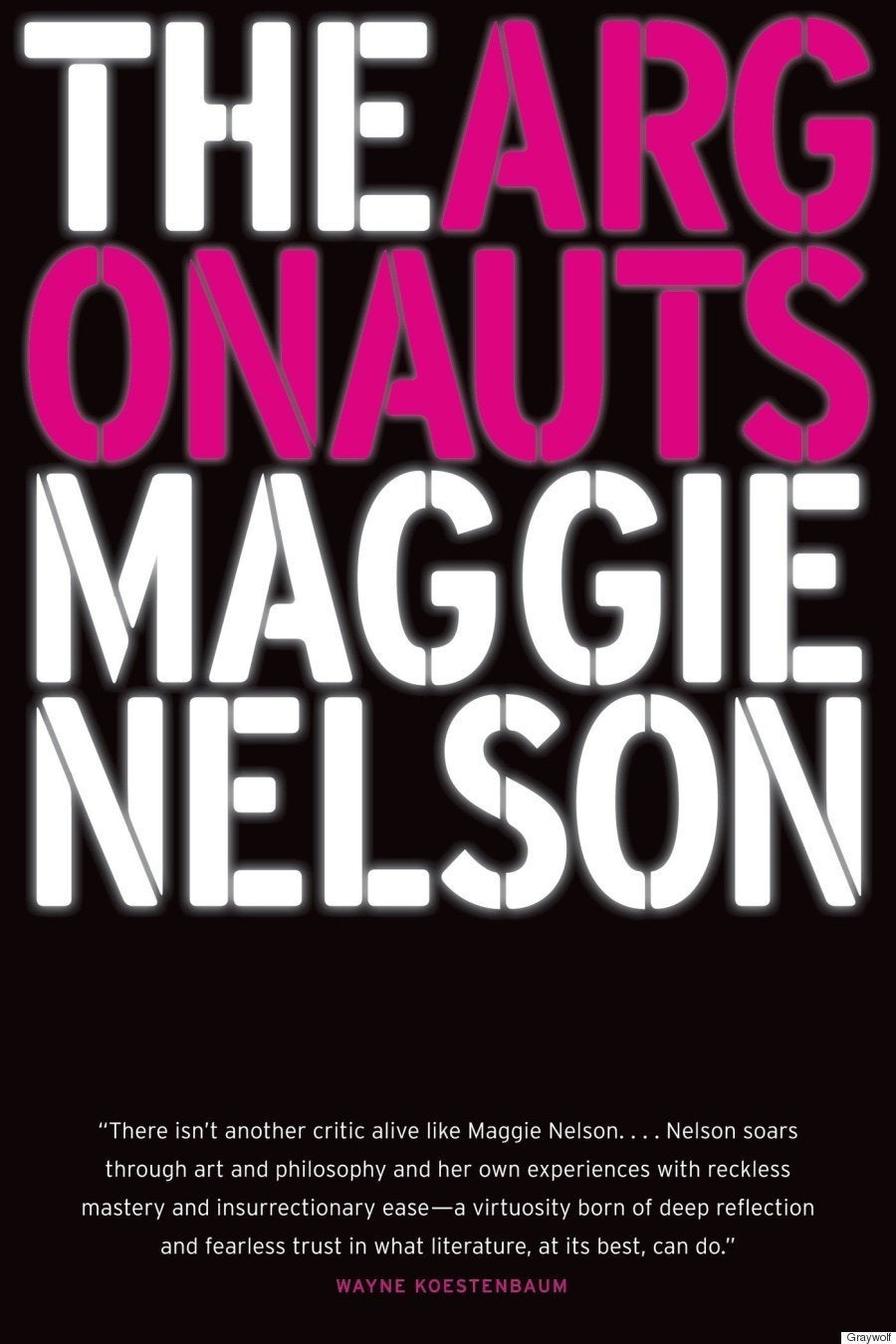
In the early 1970s, Gloria Steinem and her colleagues at Ms. magazine had a nickname for Cosmopolitan, then edited by Helen Gurley Brown. They called it “the unliberated woman’s survival kit,” an apt description for a magazine that featured cover lines like “Why I Wear My False Eyelashes to Bed” and “How Not to Get Dumped on His Way Up.”
Despite being one of Brown’s most outspoken critics, Steinem also saw the advantage of uniting with her to spread the message of women’s liberation to Cosmo’s readers, many of them conservative, small-town girls who might not otherwise get the memo.
“We each serve a different purpose with our publications,” Steinem wrote in a letter to Brown. “Ms. has a complementary function as a kind of early warning system on emerging issues that is helpful to other women’s magazines, and vice versa.”
In other words, the concept of sisterhood could, and should, extend to women’s magazines.
For a brief period in 1976, it did. That year, 32 of the nation’s top magazines for women and girls joined forces to help get the word out about the Equal Rights Amendment (the ERA), which had been ratified by 34 states and needed four more to become law. In addition to Cosmopolitan and Ms., American Girl, Daytime TV, Essence, Glamour, Good Housekeeping, Ladies’ Home Journal, Mademoiselle, McCall’s, Modern Bride, Seventeen, Vogue, and Woman’s Day were some of the other names on the list.
Together, the participating magazines reached 60 million readers; if mobilized, those readers could help change the very fabric of American life. The editors committed to a plan: Each magazine would simultaneously publish an article on the ERA in their July 1976 issues, which would hit stands that June. “While each magazine will approach the subject matter in its own way,” the editors wrote in a statement to the press, “we are unanimous in our opinion that discussion is of primary importance.”
“If mobilized, those [60 million] readers could help change the very fabric of American life.”
The ERA failed to achieve ratification. Now, 40 years later, we are facing the possible election of a dangerous presidential candidate: Donald Trump, who could do more damage to the long fight for women’s equality than any other candidate in recent memory ― a candidate who believes that women who have abortions should get “some form of punishment.”
Even more ominous than his stance on reproductive rights is the meanness and misogyny built into his brand; he has called women “fat pigs,” “dogs,” and “disgusting animals” in an attempt to mute their voices.
Trump, of course, is an equal opportunity offender, attacking freedom of speech across the board. After his ban of Washington Post journalists, columnist Dana Milbank called for a media blackout of Trump. And recently, the Mexican and Latin American edition of Marie Claire unveiled its July issue, featuring a collage portrait of Ivanka Trump on the cover, along with a bold appeal to his influential daughter, in Spanish: “Dear Ivanka: How long will you defend your father?” Inside the issue are emotional pleas to Ivanka written by Latin American scholars, artists, and journalists, including the magazine’s editor-in-chief, Daniela Von Wobeser, who asks her, “Do you think your father would be the leader America deserves?”
If anything, it’s a good publicity stunt—Marie Claire en español has been getting a lot of attention. Still, it is not enough to mute Trump or to publish anti-Trump letters. Media outlets should do more to amplify Hillary Clinton’s message. Women’s magazines, in particular, need to speak up. Editor Jann Wenner endorsed Clinton with Rolling Stone, and Lenny Letter co-creator Lena Dunham did it in Time, saying plainly: “I want Hillary Clinton to be President.”
Mainstream women’s magazines should be just as direct in expressing support for their candidate of choice. Yes, any political endorsement would alienate some advertisers and anger some readers, but it would attract others. At the very least, editors should inform their readers about what Clinton stands for when it comes to issues such as abortion, equal pay and paid family leave—as Cosmopolitan.com did this past spring with an overview of her platform.
Despite all the turmoil in the publishing industry and recently shuttered print titles like Lucky and More (Ladies’ Home Journal is now on newsstands as a quarterly), women’s magazines still have the power to reach tens of millions of readers — including young single women, a potent political force — and they should harness that power for good.
Some women’s magazines already have, becoming more political as the elections approach. Ever since Helen Gurley Brown’s day, Cosmopolitan has been telling women how to obtain safe abortions and equal pay. (In 1979, Ruth Bader Ginsburg, then a Columbia Law School Professor, penned a lengthy article for Cosmo urging passage of the ERA in yet another coordinated effort by women’s magazines.)
“It’s time for a concerted effort. A coalition. A call to action. Women’s magazines should join forces again, as they did in 1976.”
Marie Claire has run major features on women in Washington and women and guns. Glamour and Facebook are hosting a series of election-inspired town halls and conversations highlighting issues that affect women. Glamour.com also launched a vertical covering bipartisan politics called 51 Million, a reference to the estimated number of women between the ages of 18-44 who will be eligible to vote in November.
And earlier this month, a small, subversive corner of the Internet went nuts when the revered feminist blog The Toast published a heartfelt letter from Clinton to “Toasties,” in honor of the site’s final day in operation. “This is not a joke,” wrote editor Nicole Cliffe, anticipating her readers’ disbelief that Clinton could be a Toastie, herself.
Every bit of support helps, but it’s time for a concerted effort. A coalition. A call to action. Women’s magazines should join forces again, as they did in 1976.
Many are currently planning their November issues, which will come out in October. I urge those editors: Form a united front. Consider putting aside some space in your November issue for an editor’s letter, a feature, or even a sidebar in support of Clinton and the issues she fights for.
If you don’t want to endorse a candidate, then talk to your readers about what Clinton stands for and what Trump stands against. Make the issues and your opinions clear. And women’s magazines and websites should work with one another to coordinate an effort encouraging their millions of readers to get out and vote.
This year marks the 50 anniversary of the National Organization for Women, founded by Betty Friedan in 1966. It’s time to make some noise. The stakes are too high to stay silent.
Enter Helen: The Invention of Helen Gurley Brown and the Rise of the Modern Single Woman is out now from Harper and available at Amazon, Barnes & Noble, Powell’s Books, and your local independent bookstore.
This post originally appeared on Medium.

